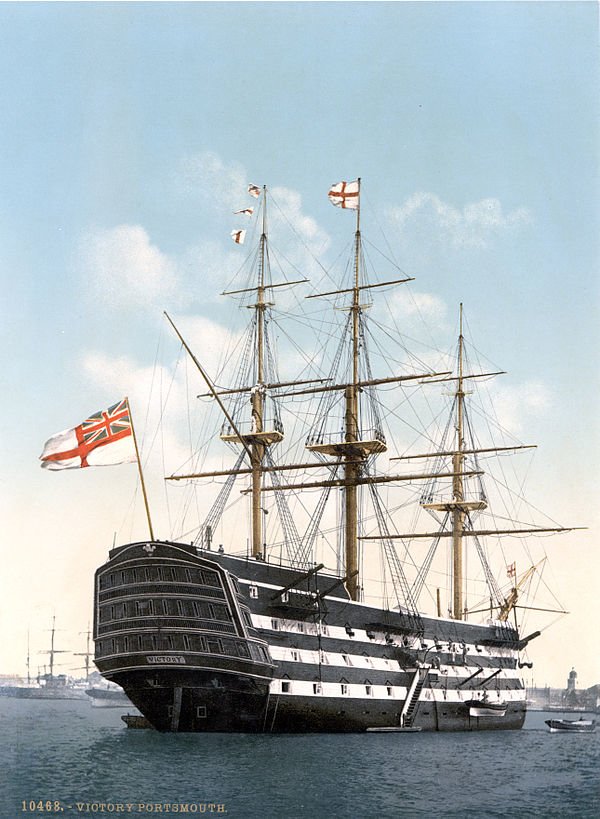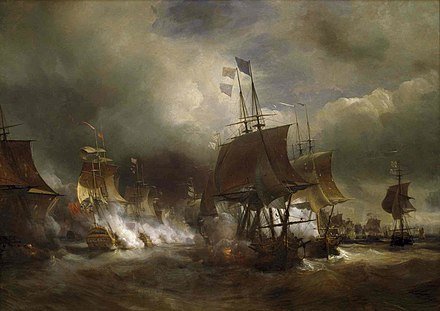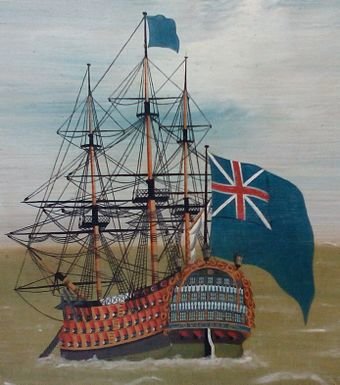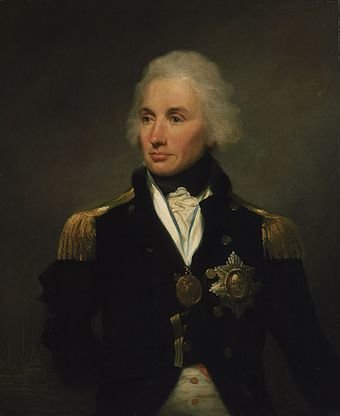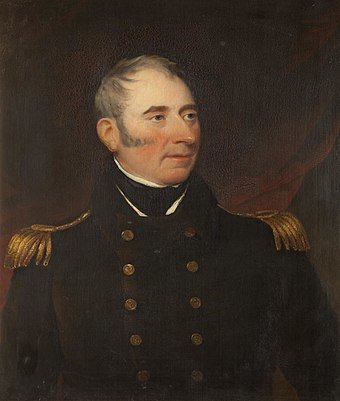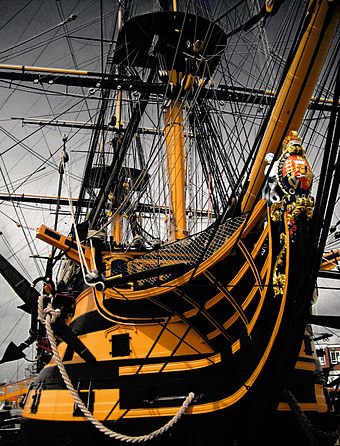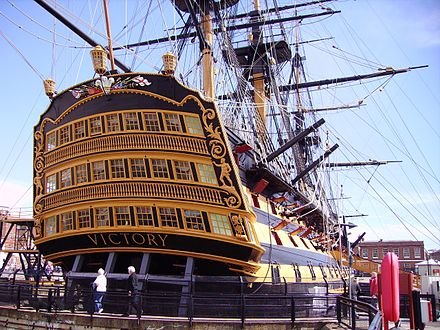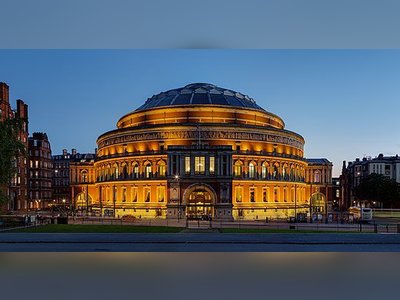British Heritage
Remember, Cherish, Learn.
beta
HMS Victory
Contribution of HMS Victory to British Heritage.
HMS Victory, a renowned 104-gun first-rate ship of the line of the Royal Navy, has made a significant and lasting contribution to British heritage. Throughout her long and illustrious history, she has played a pivotal role in several crucial naval engagements and has become a symbol of British naval power, courage, and innovation.
HMS Victory's most enduring legacy is undoubtedly her role as Lord Nelson's flagship at the Battle of Trafalgar on 21 October 1805. This historic battle marked a turning point in naval warfare and secured Britain's naval dominance during the Napoleonic Wars. Under Nelson's leadership, Victory led the British fleet in a daring and innovative tactic, breaking through the enemy line and achieving a decisive victory over the combined French and Spanish forces. Nelson's inspirational leadership and ultimate sacrifice in the battle elevated him to legendary status and immortalized Victory as the iconic vessel that carried him to victory.
Beyond Trafalgar, Victory has also served as the flagship for several other distinguished British admirals in various naval engagements, such as Admiral Augustus Keppel at Ushant, Admiral Richard Howe at Cape Spartel, and Admiral John Jervis at Cape St Vincent. These engagements, along with her other service during the Seven Years' War and the American War of Independence, further solidified her reputation as a formidable and successful warship.
HMS Victory's contribution to British heritage lies in her representation of the British Navy's historical achievements, bravery, and technological advancements. As the oldest naval ship still in commission, Victory stands as a living testament to the skills of British shipbuilders, the courage of British sailors, and the strategic brilliance of British naval commanders.
The Battle of Trafalgar and Victory's pivotal role in it have been celebrated through art, literature, and monuments, cementing her place in British cultural heritage. Paintings depicting the battle, including famous works by artists like J.M.W. Turner, have immortalized the ship's gallant charge and Nelson's heroic death. Moreover, the Nelson Chequer pattern, inspired by the black and yellow paint scheme used on Victory's gun ports after Trafalgar, became a symbol of British naval pride and was adopted on many Royal Navy vessels in the years following the battle.
As a museum ship in Portsmouth since 1922, Victory has attracted hundreds of thousands of visitors annually, providing them with a unique opportunity to experience firsthand the history and grandeur of a bygone era. The ship's public tours and exhibitions offer insights into life on board a historic warship, the naval strategies of the time, and the remarkable story of Lord Nelson and the Battle of Trafalgar. Victory's preservation and continued operation as a museum ship have been crucial in fostering a sense of national pride and appreciation for Britain's maritime heritage.
HMS Victory's success can be measured not only in her military accomplishments but also in her longevity and continued service. Constructed between 1759 and 1765, Victory was one of ten first-rate ships built during the 18th century. Her design, by the renowned naval architect Sir Thomas Slade, was based on the successful HMS Royal George. The ship's construction involved the work of 150 skilled craftsmen and the use of approximately 6,000 oak, elm, pine, fir, and lignum vitae trees, making her a formidable and robust vessel.
Throughout her active service, Victory participated in several battles and engagements, earning a reputation for her firepower and resilience. From her early involvement in the Seven Years' War to her crucial role in the Battle of Cape St Vincent, Victory consistently showcased the Royal Navy's dominance on the high seas.
Following her illustrious naval career, Victory's transformation into a museum ship in 1922 marked a new chapter in her service. As a symbol of national pride and British naval heritage, she has become one of the most visited museum ships in the world, attracting enthusiasts, history buffs, and curious visitors alike.
Her preservation and maintenance over the years have been a testament to the dedication and commitment of various organizations and individuals in safeguarding British naval history. The recent restoration and conservation efforts ensure that future generations will continue to be inspired by the remarkable story of HMS Victory and the bravery of those who served aboard her. As the oldest commissioned warship still afloat and the centerpiece of British naval heritage, HMS Victory remains a living connection to the nation's storied past and an enduring symbol of British maritime prowess.
Legacy
HMS Victory's most enduring legacy is undoubtedly her role as Lord Nelson's flagship at the Battle of Trafalgar on 21 October 1805. This historic battle marked a turning point in naval warfare and secured Britain's naval dominance during the Napoleonic Wars. Under Nelson's leadership, Victory led the British fleet in a daring and innovative tactic, breaking through the enemy line and achieving a decisive victory over the combined French and Spanish forces. Nelson's inspirational leadership and ultimate sacrifice in the battle elevated him to legendary status and immortalized Victory as the iconic vessel that carried him to victory.
Beyond Trafalgar, Victory has also served as the flagship for several other distinguished British admirals in various naval engagements, such as Admiral Augustus Keppel at Ushant, Admiral Richard Howe at Cape Spartel, and Admiral John Jervis at Cape St Vincent. These engagements, along with her other service during the Seven Years' War and the American War of Independence, further solidified her reputation as a formidable and successful warship.
Contribution to British Heritage
HMS Victory's contribution to British heritage lies in her representation of the British Navy's historical achievements, bravery, and technological advancements. As the oldest naval ship still in commission, Victory stands as a living testament to the skills of British shipbuilders, the courage of British sailors, and the strategic brilliance of British naval commanders.
The Battle of Trafalgar and Victory's pivotal role in it have been celebrated through art, literature, and monuments, cementing her place in British cultural heritage. Paintings depicting the battle, including famous works by artists like J.M.W. Turner, have immortalized the ship's gallant charge and Nelson's heroic death. Moreover, the Nelson Chequer pattern, inspired by the black and yellow paint scheme used on Victory's gun ports after Trafalgar, became a symbol of British naval pride and was adopted on many Royal Navy vessels in the years following the battle.
As a museum ship in Portsmouth since 1922, Victory has attracted hundreds of thousands of visitors annually, providing them with a unique opportunity to experience firsthand the history and grandeur of a bygone era. The ship's public tours and exhibitions offer insights into life on board a historic warship, the naval strategies of the time, and the remarkable story of Lord Nelson and the Battle of Trafalgar. Victory's preservation and continued operation as a museum ship have been crucial in fostering a sense of national pride and appreciation for Britain's maritime heritage.
Success and General Information
HMS Victory's success can be measured not only in her military accomplishments but also in her longevity and continued service. Constructed between 1759 and 1765, Victory was one of ten first-rate ships built during the 18th century. Her design, by the renowned naval architect Sir Thomas Slade, was based on the successful HMS Royal George. The ship's construction involved the work of 150 skilled craftsmen and the use of approximately 6,000 oak, elm, pine, fir, and lignum vitae trees, making her a formidable and robust vessel.
Throughout her active service, Victory participated in several battles and engagements, earning a reputation for her firepower and resilience. From her early involvement in the Seven Years' War to her crucial role in the Battle of Cape St Vincent, Victory consistently showcased the Royal Navy's dominance on the high seas.
Following her illustrious naval career, Victory's transformation into a museum ship in 1922 marked a new chapter in her service. As a symbol of national pride and British naval heritage, she has become one of the most visited museum ships in the world, attracting enthusiasts, history buffs, and curious visitors alike.
Her preservation and maintenance over the years have been a testament to the dedication and commitment of various organizations and individuals in safeguarding British naval history. The recent restoration and conservation efforts ensure that future generations will continue to be inspired by the remarkable story of HMS Victory and the bravery of those who served aboard her. As the oldest commissioned warship still afloat and the centerpiece of British naval heritage, HMS Victory remains a living connection to the nation's storied past and an enduring symbol of British maritime prowess.
- HMS Victoryen.wikipedia.org

